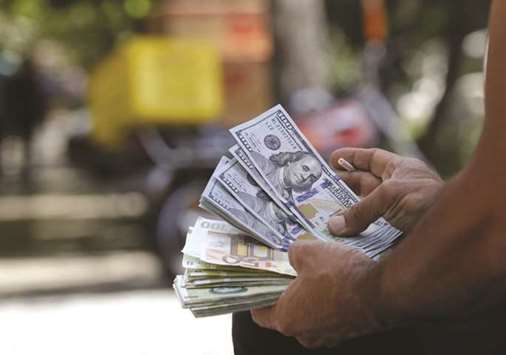For a decade, the US and other major powers squeezed Iran’s economy to force it to rein in its nuclear programme. Most sanctions on Iran were lifted in early 2016 under a multilateral agreement to limit and monitor the country’s nuclear activities. That created an opportunity for Iran to bounce back, and by many measures it has. Yet doubts about America’s commitment to the accord limited gains. Then, under President Donald Trump, the US in mid-2018 withdrew from the agreement and said it would re-impose, in stages, sanctions it had suspended. By the end of the year, the noose will tighten on Iran’s oil exports, the backbone of its economy. At stake is more than Iran’s gross domestic product. The credibility of President Hassan Rouhani, a relative moderate, rests in large part on his ability to deliver on the promise that the nuclear deal will bring prosperity. At the same time, Iran’s fortunes affect the role the country plays in a volatile region.
The Situation
With old US sanctions resuming, the rial went into free fall on Tehran’s black market. Panicked businesses and individuals snapped up increasingly scarce dollars, forcing the central bank to impose capital controls. The depreciation stoked inflation, adding to public anxiety. Even before the US turnabout, the nuclear deal had failed to deliver the returns Iranians had hoped for. In the last days of 2017, economic grievances sparked a week of anti-government demonstrations in which at least 21 people died. Sporadic protests have continued to erupt in some provincial cities. As anger has mounted, Rouhani has faced domestic pressure. Even moderates are complaining while hardliners, who always warned the US could not be trusted, are emboldened. Since the nuclear deal, the economy has risen out of recession, but almost all the economic growth has come from oil exports, which surged as sanctions were eased. For other businesses, lack of access to finance has remained a major impediment. US sanctions on financial transactions with Iran have never been lifted, making it difficult for international companies to do business there. While some overseas oil and construction companies, as well as airplane and car manufacturers like Airbus SE and PSA Group, have inked deals, foreign investment has fallen short of Rouhani’s rosy projections. The re-imposed US sanctions will worsen the investment climate by punishing multinationals doing business in Iran. All along, most American companies have been kept on the sidelines by a sweeping 1995 US ban on trade and investment, triggered by concern about Iran’s alleged links to terrorism. Now, US licences given to Airbus and Boeing to sell planes to Iran are being revoked.
The Background
The Pahlavi monarchy that ruled Iran from 1925 transformed a small agrarian economy into a booming one, developing both manufacturing and oil production. Industrialisation and an influx of rural Iranians into the cities led to cultural tensions that were among the factors that provoked the 1979 revolution. Subsequent leaders have never quite settled on the appropriate shape of the economy in an Islamic state. At first, much of the economy was nationalised. Starting in the late 1990s, the country’s leaders tried privatisation. Many assets, however, ended up either with the Revolutionary Guards, Iran’s premier security corps and the most powerful economic actor in the country, or with its affiliated corporations or religious charities. Elected in 2005, President Mahmoud Ahmadinejad took a populist turn, expanding credit, spending freely and handing out $15 a month in cash to every citizen. These policies fuelled inflation just as sanctions began to bite. Rouhani was first elected in 2013 promising to end Iran’s economic isolation.
The Argument
Britain, Germany and France — which along with China, Russia and the European Union are the remaining signatories with Iran to the nuclear deal — argue that supporting Iran’s economy, which is about the size of Austria’s, is the best way to boost political moderates represented by Rouhani. They say that better integrating Iran into the global economy creates incentives for the country to abide by the nuclear agreement and other international norms. Sceptics argue that such thinking underestimates the commitment of Iran’s leaders to expanding their power in the region. They say an Iran with more money is just a more dangerous Iran, better able to support allies such as Syrian dictator Bashar al-Assad as well as groups like Lebanon’s Hezbollah, Yemen’s Houthi rebels and Iraq’s Shia militias.

A man holds a stack of Iranian rials and US dollars in the Iranian capital Tehran. With old US sanctions resuming, the rial went into free fall on Tehran’s black market. Panicked businesses and individuals snapped up increasingly scarce dollars, forcing the central bank to impose capital controls.
